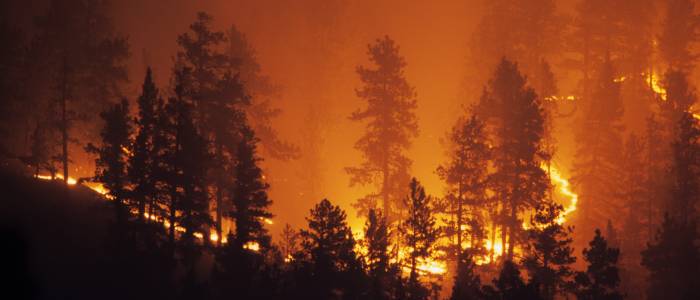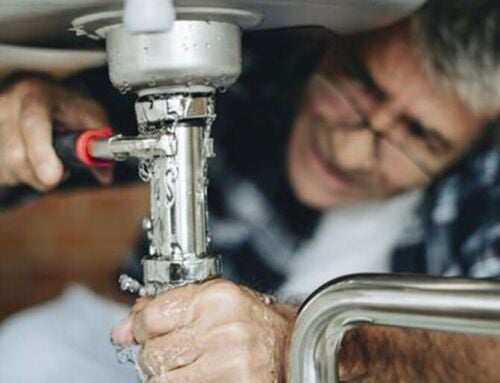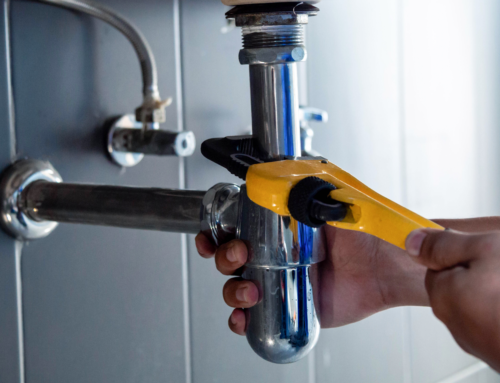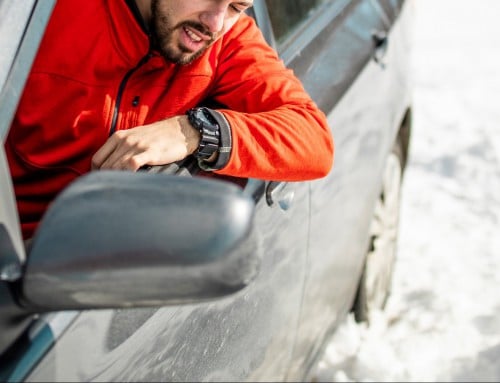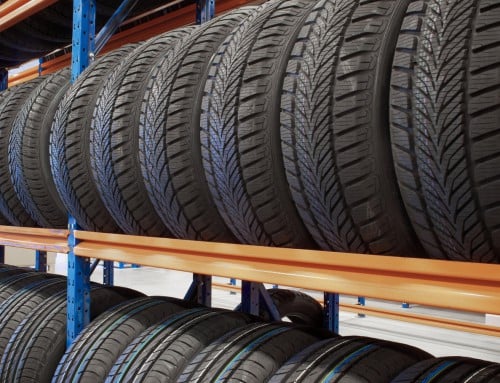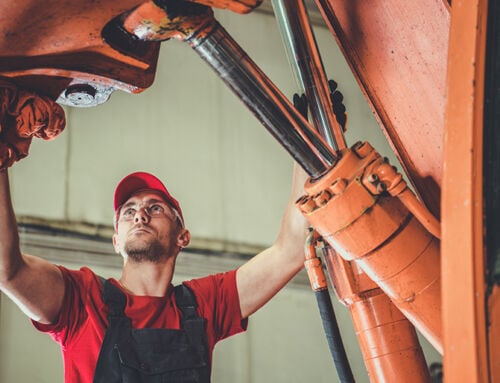Forest fires are bound to happen this summer. Here are some ways to help keep your business safe.
Environmental factors like high temperatures, low humidity and high winds increase the risk of wildfires but you can still take steps to protect your property. The main ways to do this are through building design, property access, fuel reduction, and fire safety practices. Here’s a more detailed breakdown of these four areas:
1. If you build it…make sure it’s fire resistant
- Use fire-resistant roof coverings.
- Cover roof vents with fire and corrosion-resistant screens.
- Exterior openings such as windows and doors should have a fire resistance rating of at least 20 minutes.
- The fire resistance rating of overhangs, eaves, and balconies must be at least one hour.
- Install spark arrestors on chimneys to keep sparks and embers from escaping.
2. Don’t let fire access your property
- Driveways and access roads should be well-maintained, adequately-sized and properly-graded.
- Roads and parking areas should be able to accommodate 11 meter (38 foot) long fire department vehicles with turning radiuses of 14 meters (48 feet).
3. Don’t fuel the fire
- Create a fuel reduction area or safety zone to protect your property from fire.
- Keep at least nine meters (30 feet) of distance between buildings, automobiles, fuel tanks, outside storage areas, and high grass or wooded areas. Limit this space to well-irrigated small plants and grass.
- Clear debris such as dry or dead brush, trees and grass within 15 m (50 feet) of all buildings. For buildings on slopes, clear 60 m (200 feet).
- Properties whose threes are mainly deciduous (oak, maple, etc.) should have nine meter (30 foot) safety zones. If they’re coniferous (pine, fir, etc.), it should be thirty meters (100 feet).
- Trim trees so their branches are at least two meters (six feet) from the ground.
- Remove deadfall and trimmings from open spaces.
4. Fire safety first
Fire safety is important for all property owners but it doesn’t hurt to take a few extra steps if you’re in a wildfire area.
- If you’re storing combustible or flammable materials and liquids outdoors, make sure they’re far enough from buildings, fences, vehicles, etc. Check your local laws for specific requirements.
- Only store these liquids in approved containers.
- If your building is on a slope, store them lateral to the building, not up or down hill.
- Establish a safe outdoor smoking area that:
- Is preferably paved
- Won’t catch fire when smoking materials are dropped.
- Has appropriate containers for discarding smoking materials.
- Don’t burn outdoors in dry weather or during wildfire season.
- Use fire resistant waste containers.
- Keep roofs and eaves troughs free of leaves, branches, pine needles, or any debris that could fuel a fire.
Preparation and planning will significantly improve the chances of your property surviving a wildfire. Make knowing what to do when a wildfire is threatening part of your plan. Your local authorities can help you with specific requirements for your area.
